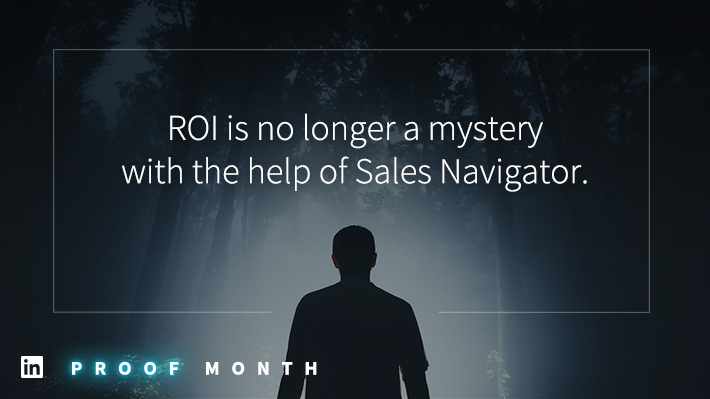
If you read the headlines you may well think cryptocurrencies are a either a radically new way of paying that is our savior from ossified, corrupt governments or on the other side that they are speculative Ponzi schemes. The reality of course is that cryptocurrencies can be both and can be liberating and corrupting at the same time.
My goal with this post is to lay out a simple framework for anybody unsure whom to listen to orient your own views and develop a healthy skepticism for arguments lacking merit often by friends telling you how much money they’ve made.
I’ll lay out the cases for and against cryptocurrencies:
A. The Simple Case for Cryptocurrencies
Currency is something most of us take for granted in our daily lives and don’t give much thought as to where money came from, how it became accepted and trusted and how it’s evolved over time. It’s pretty tough to have a view on cryptocurrency if you don’t have a history of currency.
Currencies only began in earnest about 2,500 years ago and ever since have been a great enabler of democracy and social mobility, not the other way around. By making it easier to capture value for goods & services that ordinary people provide and by creating a means of storing value today that can be used in the future — currencies have literally changed society and the world.
Currencies enabled the creation of the first modern corporation (around 400 years ago to allow groups of shipping merchants to pool together risk), the modern stock markets (so that people could own a portion of a merchant ship & sell this when they needed more cash) and then spawned regulators that oversaw all of this because the minute you have markets you have people who manipulate them unsophisticated new traders out to make money that they hear everybody else is making. Sound familiar?
Currencies also begat debt markets and this credit has lifted millions out of poverty by allowing people to invest in capital equipment that they otherwise couldn’t afford today that can yields profits tomorrow.
(There is a short reading list in the Appendix if you want to learn more.)
The strongest cases for the existence of cryptocurrencies in my mind include:
- Allowing for a decentralized Internet in which value is accrued to infrastructure, protocols and applications that serve market needs
- Allowing electronic trade across actors who may not know or trust each other without middlemen who take a heavy toll / tax on the transaction
- Allowing for (the potential of) a more stable currency than one’s own government for citizens who may live under despotic or irresponsible regimes
1. Decentralized Internet —
This is perhaps the most unsexy part of cryptocurrency but the one that most purists I follow on this topic are most excited about. I believe this use of cryptocurrency will develop and flourish long after the dust settles from the hype and crash of today’s cryptocurrency bubble that we’re experiencing in 2017.
The Internet and World Wide Web themselves emerged from open protocols (HTTP, HTML, SMTP, etc) that allowed businesses, individuals and governments to put information online that was accessible to the masses and connected us all directly to communicate and eventually trade. The Internet allows people in relatively poorer parts of the world to complete work for relatively richer parts of the world at wages higher than a local economy may bear. This has massively enriched the world and one can see why a currency that underpins Internet infrastructure would be attractive.
The crypto in cryptocurrency is of course referring to cryptography or the ability to encrypt your transactions so they can’t be modified after they have been written to the blockchain. You can think of this effort as the same as the US government improving the quality of its dollar bills to make them harder to counterfeit. For any currency to have value it must be trusted to be authentic.
In order to have a secure, decentralized means of transferring money between individuals you need a way of providing services that a modern centralized financial system would offer. For example, you need to know if a transaction was completed, you need to know the parties involved, you need to ensure that they actually own the money that they are transferring and that they haven’t previously pledged it to somebody else. And you need a means of auditing transactions so that they are verifiable. This is what the “blockchain” you keep reading about provides. It is a “ledger” (like your normal accounting system that records debits & credits) that is “public” (anybody can see the transactions that took place) and “distributed” (it isn’t held by one company, it works more like Skype that is distributed on “nodes” all across the world who agree to process & store transactions in exchange for … you guessed it … Bitcoin — or some other cryptocurrency depending on the market).
The Internet that has offered the world so much economic opportunity has also centralized wealth creation into the hands of relatively few people on a scale and in a timeframe never seen before in history. And while many of the people bringing you the great applications and infrastructure you now rely on are benevolent, there is of course a normal incentive for these companies to use their scale advantages to continue to dominate the markets they’re in, making it harder for upstarts to compete.
This market structure in which the few, large players use their market position to eliminate competition is inevitable and it’s hard to blame large companies or countries who want to protect their advantages. It’s Hobbesian economics 101. When you achieve economies-of-scale advantages it doesn’t benefit you to help newer companies draft off of your infrastructure to rise and compete against you. Of course our beloved technology industry did itself rise on the back of infrastructure created by telecommunications & cable infrastructure as well as decades of media production (not to mention enormous tax dollars over decades that created the infrastructure in the first place).
The world in which our communications was controlled by the telephone and media companies of 20 years ago would have been much less innovative than what we have achieved, which is precisely why we need to protect future companies still to be created from anti-competitive behavior of today’s giants.
An example of this stranglehold is distribution systems to find new apps in a mobile Internet is tightly locked down by the oligopoly of Apple and Google. They control the placement of apps in the ecosystem, they get to rule on whether they want you to exist or not and they heavily tax your participation. Unsurprisingly this system favors products by companies that already have enormous resources. In many ways this system now mirrors the “decks” or “portals” that mobile phone companies used to control mobile app distribution 20 years ago.
Distribution of media is also now tightly controlled by YouTube, Netflix, Facebook, Amazon and a handful of others that have huge scale advantages. And our social graphs are locked in Facebook, Twitter and Snapchat. Breakout companies become much harder and this isn’t likely to improve unless we give new companies the tools and capital they need to flourish.
Because so many of us (myself included) love out technology providers, few have begun to fully grasp how much centralized control, for example, Amazon has over cloud-based storage and processing and it’s even more dominant in eCommerce and physical, last-mile distribution. I love that Amazon can deliver me products a mere hours after I order them but fast-forward 20 years and if they have no real competition for last-mile distribution this eventually could produce negative consequences for the market and for consumers.
Capitalism encourages creative destruction of systems that came before it in search of better, more efficient alternatives. Oligarchs use market power to stop these new forces. In order for young seedlings to become the giant trees of tomorrow we need a way to protect them and allow them to flourish.
Enter the “decentralized Internet” (i.e. the one not controlled by just a handful of large corporations). If you think about some of the great breakout peer-to-peer file or resource sharing products like BitTorrent, Skype, Naspster, Gnutella, etc. they found a way to use distributed resources across the Internet not controlled by a centralized company. In essence users like you probably used many of these products without complete awareness that your computer became a node and was being used to transmit files.
It’s true the P2P sharing of music was initially destructive to artists and labels but it led to today’s streaming services that you now enjoy and pay for like Spotify, Pandora or Apple Music. Having a library at your fingertip of any song for a subscription fee is of enormous benefit to the consumer but never would have happened without the forces of creative destruction.
Enter blockchain. Like the P2P services that came before it, it decentralizes the transfer of information across any node that will run its services and in this case what is transferred are all transactions between parties on the blockchain and stored on a public ledger.
The existence of cryptocurrencies can create a way to provide economic value for those who provide computing resource or bandwidth to a product built on P2P infrastructure. The currency provides a reward for the best applications that the market wants to use as well as to people on the network who are willing to let their computing power or bandwidth be used.
And of course any kind of application could be written to run on this infrastructure including things like a file management system that could compete with Dropbox, a database or raw storage company that competes with Amazon’s AWS or something that doesn’t exist already in today’s world.
For example, using cryptography and the blockchain I could transmit a blog post or a picture to a third-party who could know authoritatively that this was written word-for-word by me and not doctored in any way (because it is encrypted using cryptography to be uniquely created by me). In a world where perhaps foreign governments start propagating false information to influence our society, guaranteeing authenticity would become a very big deal.
The biggest problem with today’s cryptocurrencies to provide this market for a decentralized Internet is akin to the problems with funding Dutch East India Company exploration in the Spice Islands. If the value of participating gyrates wildly based on information unrelated to the value of this exploration then it’s hard for participants to trust large amounts of capital to the system.
The problem that I see is that cryptocurrencies are not a “stable” store of value. In fact, they operate less like a “currency” and more like a “stock market” or a “commodity” whose price can fluctuate rapidly and thus people buying and selling it seem to be doing so in more of a speculative fashion.
I believe the massive valuation increases in cryptocurrencies we’ve witnessed of late are not based on any fundamentals other than speculation and a drive for a quick profit by many who have gained from the market hype. I don’t believe this does any good for the legitimate long-term purposes of having cryptocurrencies.
For products or services to work with a non-governmental, uncontrolled currency based on cryptography, they have to rely on more than the promise of authentication that cryptography offers today. They need to be able to count on a stable currency or for people to trust they will get fair value from the system in the long run if they invest today.
Of course when you publicly call cryptocurrencies speculation you predictably get lambasted as I’ve noticed if I ever write anything on Twitter. Nobody making massive amounts of money in a short period of time without any real basis for making this money would ever want to acknowledge the arguments of somebody who might stop them from making even more money. That would be like Turkey’s voting to have Thanksgiving dinner.
2. Allow untrusted network participants to trade
If you started a business 200 years ago you could mostly only trade in your local economy and you relied about “traders” who could transport your products great distances to those who might like to buy them in foreign lands. But your buyers were limited so your market size was limited and thus your ability to build at scale was limited unless you controlled armies or natural resources.
The great promise of the Internet was the ability to break down barriers and allow you to sell products and services globally, benefitting buyer and seller. But as with most Internet businesses, over time middlemen become very powerful brokers in marketplace businesses. If you’re a driver you need to Uber or Lyft to give consumers the confidence that you’re trustworthy. If you want to buy artisan goods on Etsy, the marketplace helps you source goods and verify a degree of reputation. Same Airbnb, Upwork, Thumbtack and others.
Middlemen play the role of distribution, authenticating buyers/sellers, clearing financial transactions, providing insurance and restitution if something goes awry.
If distributed systems can be built and if blockchain can record transactions and if network protocols emerge that verify authenticity of users and provide useful services such as creating escrow in transactions then in theory cryptocurrency ought to streamline online business, remove more control from centralized brokers and reduce transaction costs.
This does not mean that all existing intermediaries go away. Mostly I think new types of brokers will emerge and this will drive down transactions costs, improve services and make it easier to do business with people around the globe.
3. More Stable Currency for Some Citizens of the World
Some people don’t trust their governments with a national currency. History is filled with governments who plundered resources on wars or explorations or have provided economic handouts to buy-off the loyalty of certain population and have printed money to meet their obligations. As economists know, sharp increases in the money supply is one major cause of inflation (inflation equals increases in the prices of goods & services) and inflation erodes the value of people holding that currency who hope to save it and spend it in the future. In short, with high inflation today’s money is worth less in the future so you wouldn’t want to “store” your wealth in cash if it is depreciating.
Throughout history Governments have also restricted the flows of capital outside of national boundaries and have tightly tracked stores of capital as a means of controlling and/or taxing its citizens.
If one lives in the United States or other stable economies it’s far fetched to suggest that cryptocurrencies are more stable or more widely accepted than one’s national currency like the dollar. But of course if you live in a repressive regime and value the easier transfer of capital and particularly the anonymous transfer of capital then the additional risks of cryptocurrency fluctuations in value may be more attractive than a currency controlled by your local government.
So I think one’s embrace of cryptocurrency for reasons other than speculative, short-term gains may be inversely correlated with one’s trust for their local government to protect the value of their wealth through a stable economic system and currency.
B. The Simple Case against Cryptocurrencies
In the case for cryptocurrencies I argued that some global citizens rightly don’t trust their governments to have control over their currency or their cash and don’t trust their own government to know what they are doing with their wealth.
For many good-standing citizens of the world who happen to live under oppressive regimes this is an understandable goal. But there are also many people in the world today who favor cash today precisely because they are conducting business that today’s societies don’t want to exist including illicit drug trafficking, the sex worker trafficking market, organized crime, foreign government interference in elections, terrorism, gun smuggling and so forth. What a few season of Narcos and you’ll see the role that untraceable cash plays in greasing illicit activities.
So I would outline the simple case against cryptocurrencies includes three completely related factors
- Powerful governments won’t tolerate the loss of monetary control or propagating illegal activities
- Societal pressure to regulate cryptocurrency will increase as more people are duped, as more fraud is discovered, as more hacks occur and as more market participants collaborate to manipulate the value of the currencies themselves
- Erosion of trust in the public will come as first-time cryptocurrency participants get duped, lose money and develop skepticism for the asset
1. Governmental crackdowns
Governments regularly use surveillance to track illicit behavior and curb or curtail activities. Our own government in the US regularly looks for cases of racketeering, attempts to crack down on the drug trade, tries to prevent illegal sex trafficking, looks out for insider trading on stocks, tries to stop child pornography and so forth.
Of course all of these illicit activities take place precisely because there is so much economic interests at stake in providing “social bads” to people who want to consume them. It’s no wonder that the creation of a currency that has total anonymity would gain favor first with people for whom so much money could be gained by improving the ability to transact without governmental oversight.
No event has gotten the US and other governments so involved in the crackdown of monetary flows than the movement of money for terrorist activities post 9/11. Terrorism at scale can only occur when these organizations can move money around to finance people who make bombs, buy guns, train recruits and so forth.
And if you think the US government is going to allow wide-scale movement of money within the United States in which the government can’t identify the sources and uses of capital you’re kidding yourself.
Also recognize the important the monetary policy plays in government leaders try to preside over stable societies, to offer benefits and services to its population and even to finance wars in foreign lands or to protect one’s interests at home. Whatever you think of these governmental activities I can assure you that governments won’t cede monetary control easily.
China has already made moves to massively curtain Bitcoin activities so that should be a clue of what is to come. You think Turkey is going to be eager to allow the movement of capital it can’t track? Russia? Iran? No way.
I know Putin talks about cryptocurrencies but since his geopolitical strategy seems to be destabilization of democratic regimes and alliances it would seem to me that Russia would have a strategy to use cryptocurrencies in a destabilizing way to its advantage. Think for example if the people with whom you’re trading currency can use huge piles of cash to drive up the value of your currency in a short period of time and then use coordinated groups to then drive down prices through trading and misinformation to destabilize people.
Destabilizing untraceable currency markets unpinning our technology ecosystem must be at least as attractive as manipulating our social media advertising and media markets before an election. It certainly should be food for thought. Of course this won’t trouble your friend who just made 8x on his or her Ethereum coins over the past year. But if you’re thinking critically about the long-term future this should at least be part of your consideration set.
2. Regulation
Many cryptocurrency mega-cheerleaders are radical libertarians that want no governmental control of currency or trade or other forms of regulation. I understand why people are turned off by regulation and of course undue regulation can stifle business.
But for the same reason we have SEC oversight on trading public stocks, we need oversight or nefarious actors will manipulate the system. There is a fascinating story in “The Ascent of Money” by Niall Ferguson in which Ferguson describes how the modern corporation emerged. About 400 years ago merchants from the Netherlands were sending ships to Asia in search of spices widely desired in Europe. More than 50% of all ships that sailed wouldn’t return so groups of people banded together and formed the Dutch East India Company to share the risks and the rewards of their conquests.
This is amongst the first examples of the modern corporation. The company brought back spices and reaped profits that went back into building more ships and sailing back to Asia. The company didn’t distribute the profits to individual shareholders who instead were issued the modern form of a share certificate for their ownership. Because they couldn’t monetize this ownership they started selling shares of their ownership to others, thus perhaps the first stock market and transaction dating back to the early 1600s.
No sooner did people start selling shares in these companies than market speculators started spreading false stories about merchant ships being sunk or about large spice conquests to drive up or down the price of these stocks through false information and manipulation. So oversight became necessary to establish trust in the value of these assets.
This is where I see cryptocurrencies today. I speak to colleagues who participate in trading crypto who tell me that there are coordinate rings on encrypted instant messaging platforms like Telegram to have coordinated buying and selling of new currencies. This sounds to me like fraud, pure and simple.
And I know that ICOs (initial coin offerings) are all the rage amongst startup and some are raising for entirely good and valuable reasons. On the other hand, with no oversight of the ICO process and with the possibility of Dutch East India Company style manipulation by either companies or individual buyers of these currencies, I worry about the integrity of the market unless there is oversight.
What I can tell you from my vantage point? I see companies that have been trying to raise professional money for years and have struggled suddenly gearing up for ICOs because they know there is so much demand from them — precisely because so many people speculatively made money on Bitcoin and Ethereum.
Ask yourself this — how did it go when a bunch of Internet companies when public in 1998–1999 with limited revenues or oversight? Why would pouring hundreds of millions into even earlier stage startups with even less or no oversight be a good idea?
Regulation will come. It needs to come fast.
3. Trust
Between 1998–2000 the world became enamored with the “new economy” and Internet companies that were going public on NASDAQ in the United States. Not to be outdone, the UK promoted the AIM market, Germany the Neuer Markt and France the Nouveau Marché all with the aim of taking Internet companies public.
Many of these countries hadn’t been big stock speculators but the gains of the US Internet companies were too tempting. So ordinary citizens poured hard-earned money into owning any company that could claim to be an Internet company and their valuations skyrocketed with no underlying rationale.
Unsurprisingly a whole generation of first time stock traders became jaded about not just Internet stocks but the entire public stock market system as many people lost a large portion of their net worth. Trust doesn’t come back easily, which is why the role of regulation is so important.
In order for people to trust cryptocurrencies in the long run they will need to believe they are transparent, fair, stable, safe and that somebody is watching over them to provide an imprimatur of trust.
Without trust no currency has value.
C. The Arguments That Should Make You Suspicious
1. Cryptocurrencies offer a better mechanism for companies (or funds) to raise money
ICOs are not a better way to raise capital than traditional routes, they are a different way and can work together with other forms of fund raising including traditional crowd-funding and/or product pre-release funding like Kickstarter and Indiegogo.
I welcome the role that ICOs may play in some technology companies where a legitimate purpose exists for a “coin” or some form of token to exchange value between market participants. But I also believe that the backlash that will happen against ICO fraud will likely burn some people to future participation until and unless there are some frameworks for oversight of the market.
2. Cryptocurrencies will eradicate VCs
I know that people hate having to deal with people to raise money and the idea of being able to turn to an anonymous crowd and if they value what you do they will provide you money is appealing.
But putting large sums of money in the hands of first time or even experienced entrepreneurs with absolutely no oversight is a recipe for disaster. The fundamental role a VC plays is the role of board members and their job is to provide oversight (and even auditing) of the company for the purposes of protecting shareholders. This is the same board role that emerged from the Dutch East India Company to provide more transparency to investors.
So however populist the idea of cutting out people from the process may be, I strongly doubt it will replace the role of the existing venture capital ecosystem. In many ways, it could even become a new tool for earlier shareholder liquidity including the exit of some VC money. We’ll have to see how it all plays out.
3. Cryptocurrencies will drive a reorganization of societies into more libertarian structures
The most vociferous promoters of cryptocurrency include a group of people who have a total disdain for governments and financial markets and imagine a world in which technologists cut out all power structures and create a truly flat world.
I understand the idealistic tendencies in the same way I understand the idealistic tendencies of those who long for socialism or communism. It seems like the world would be a more fair place if it weren’t for leaders who run countries and organizations and benefit from these activities.
The problem without having governmental systems, however imperfect, is that the opposite is anarchy. And through every idealistic movement to bring equality to all ends in newer forms of power structures and usually wants that are less benign as they seek to hold on to power.
I know it seems strange to veer into this topic in my post but the more time you spend listening to cryptocurrency promoters the more you realize that there really a small undercurrent who have an objective of subverting existing order. And no prizes for guessing who would benefit if this order was disrupted.
D. So Where Do I Personally Net Out?
As with many things in life, I’m super optimistic that out of this current wave of innovation around distributed ledgers (blockchains) and cryptocurrencies (like Bitcoin and Ethereum) will come some great leaps forward of innovation that will benefit the world.
At the same time I remain skeptical about the motives of many of today’s market participants and extremely skeptical about the massive run up in valuation of many of today’s crytocurrencies. The arguments “for” of many market participants ring as hollow as they did in 2005 when they told me I was an idiot for believing that Florida real estate prices would drop or in the dotcom 1.0 boom where many companies had deeply inflated values.
As with every situation, I always try to think through, “What are the motives of those who are telling me A or B?” and “what is the intrinsic value of a given asset and what will determine its future value?”
Appendix
If you really want to have an informed opinion money & currency then it would help to read a historical primer on the topic and I have two great recommendations. The first is “The History of Money” by Jack Weatherford (who also wrote one of my favorite books on world order & world trade, “Ghengis Khan and the Making of the Modern World”). And another great book on the role currencies play in the creation of governments and in war & peace read Niall Ferguson’s, “The Ascent of Money.” It’s pretty tough to pretend to have an opinion on cryptocurrency without first understanding the origins and evolution of money throughout the last 2,500 years.
p.s. Because this is a single sitting, top-of-mind post it shouldn’t be thought of like a research paper, it may be incomplete and I’m not trying to be the final authority on the topic. I think of this as more of a 101 primer for those who want to develop their own framework for thinking about the topic.
Photo via Visual Hunt
Want to Really Understand What all the Hype of Cryptocurrency is About? was originally published in Both Sides of the Table on Medium, where people are continuing the conversation by highlighting and responding to this story.




















 A note to remember: If you are not listening to your customers, they will go elsewhere.
A note to remember: If you are not listening to your customers, they will go elsewhere.
![Download Now: Sales Training & Onboarding Template [Free Tool]](https://no-cache.hubspot.com/cta/default/53/1dc09795-02c8-4fbe-a62b-a1d669dec2c5.png)






 Thanks to John Vale for sharing advice and opinions in this post. John is a Growth Specialist for
Thanks to John Vale for sharing advice and opinions in this post. John is a Growth Specialist for 





































 Newspapers, magazines and websites online can be
Newspapers, magazines and websites online can be 





























